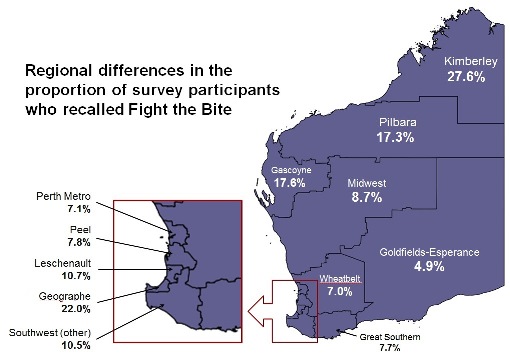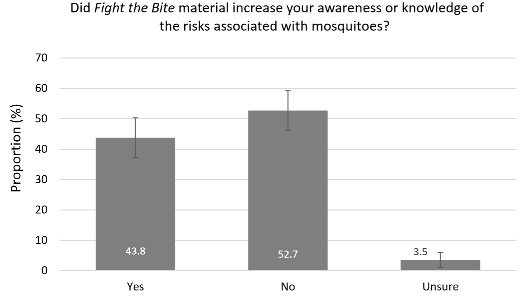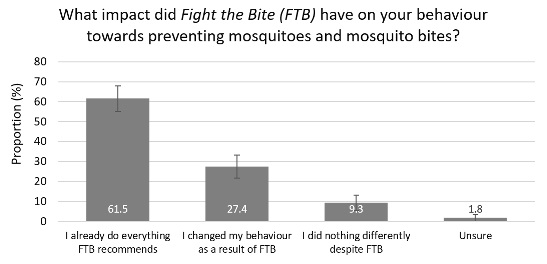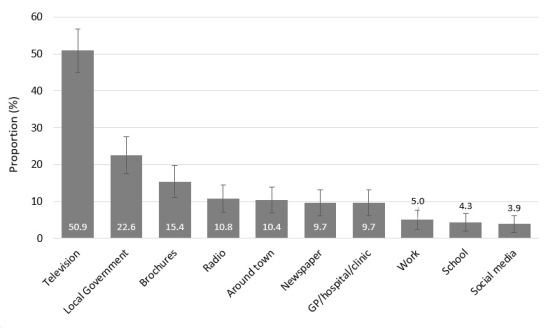Recall
On average, 8.2% of survey participants across the state were able to recall Fight the Bite. This is likely to underestimate the true campaign reach, as a further 13.6% of individuals recalled other communication material that included indirect media exposure related to the campaign, such as newspaper editorials, radio interviews and nightly news coverage, generated from Departmental and local government efforts.
Campaign recall was significantly greatest in the Kimberley (27.6%) and Geographe (22.0%) regions, as well as the Pilbara (17.3%) and Gascoyne (17.6%) regions, where the Fight the Bite had been intensively promoted over the evaluation period.

Awareness change
Of the individuals who recalled Fight the Bite, 43.8% reported an increase in awareness of mosquitoes and mosquito-borne diseases. Key health messages, Cover Up, Repel and Clean Up, were recalled by 72.6%, 60.2% and 47.8% of the subset of survey participants who recalled the campaign, respectively.

Behaviour change
A total of 27.4% reported improved prevention behaviour and practices, with a further 61.5% reportedly doing everything Fight the Bite recommends.

Effective campaign advertising mediums
Fight the Bite was most commonly recalled through television, followed by direct local government efforts. The proportion of individuals who recalled the campaign by a variety of delivery methods is shown below.
